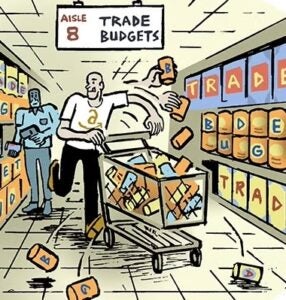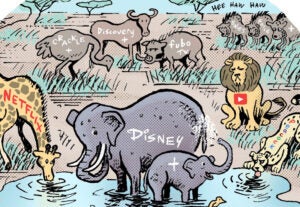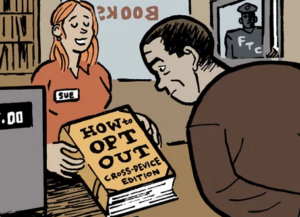 “Networking” is a column focused on the evolving roles of networks in online advertising.
“Networking” is a column focused on the evolving roles of networks in online advertising.
Today’s column is written by Mike Seiman, CEO of CPX Interactive.
Looking back at a decade of online advertising, one thing becomes pretty clear. The arc of the landscape has slanted toward complexity and compartmentalization. While it is true that there are now any number of solution providers available to help an advertiser spend its online advertising budget, the question that should be asked is “Has all this compartmentalizing really benefited the advertiser, or has the process just complicated itself into inefficiency?” I tend to think that there is a good deal of inefficiency now built into the system and I predict a pendulum swing back in the direction of one-stop solution simplicity. Furthermore, I respectfully submit that the industry player best situated to lead this next-generation ‘back to basics’ shift is the same one that was there at the beginning…the ad network.
So how did the landscape evolve away from the promise of a one-stop ‘easy button’ originally offered by ad networks? Well, in truth, some of the blame must be laid at the feet of the ad networks, themselves. Access to huge pools of inventory was a unique selling proposition in its time. But ad networks probably were not aggressive enough in adapting to a rapidly evolving landscape. While spending time growing their reach, ad networks allowed 3rd party technologies (demand side platforms and tools) to grow in prominence. Ad networks operated under the belief that, by adding their own USP to the mix, these ‘specialists’ would create greater efficiency and that rising tide would raise all boats. In truth, if ad networks had been a little more protective of the industry space they had created, they could have developed the very same services, and these demand side platforms would probably never have come into existence.
The problem came when the list of new options created real questions for media buyers about what strategy was the best. With more and more options, media buyers had more and more questions and, increasingly, the individual solution providers were becoming more and more isolated and technology driven, unable to provide holistic advice that spoke to the entirety of the media buyers’ needs. And so the questions piled up:
- Which exchange should I buy in?
- Is it quality inventory?
- Can I just join myself or do I need a demand side partner?
- Can I trust the demand side partner?
- Should I use a brand safe protection tool?
- Whose data should I use to hit my audience?
- Should I just buy audiences or should I buy categories of sites?
- Does a demand side platform have the ability to get me the right sites in a certain category through exchanges and supply side platforms?
- Which demand side platform is right for me?
A process that was envisioned to simplify the work of online marketers had, instead, become more of a headache then it had ever been. Additionally, rather than focusing the advertisers’ online dollars on larger ROI, with more and more ‘hands in the pot,’ the process was now resulting in less of the advertising budget actually being spent on media.
So how might a re-simplification happen? The problem is that the ‘platforms’ (supply, demand, data) are really technology plays. They deliver their particular value to the mix, no doubt, but they are not set up to provide hand-holding support nor real insight into how a media buyer might integrate their services with the services of others. And this is why I see the task of unifying the fragmented online advertising landscape falling to the ad network.
Ad networks that focus on building technology platforms which allow an advertiser to plug into all the other industry players, while still offering the strategy and service that clients have come to expect, will find themselves rewarded with the trust (and advertising budget control) of the brand and agencies they need to validate online advertising as primary consideration.
I am under no false impressions that this will be an easy task for ad networks. It will take a commitment to understanding the real needs of advertisers and to developing technology and protocols that will provide access to (and strategy for) all the other players in the landscape. Still, the ad networks’ position as the hub of online inventory creates an opportunity to integrate unifying technology, true optimization and real service.
The original USP of the ad network was that they could make the landscape simpler. I submit that they should (and can) be the ones to deliver on that promise in today’s even more complicated space.
Follow Mike Seiman (@CPXceo), CPX Interactive (@cpxinteractive) and AdExchanger.com (@adexchanger) on Twitter.
.











